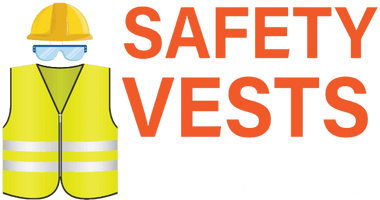
Why is it important to wear high-visibility coveralls?
Visibility is necessary for workplace safety, especially in industries like construction, transportation, utilities, and manufacturing. High visibility coveralls protect workers from unnecessary accidents, especially in low light or high risk environments. It is an essential part of personal protective equipment (PPE). In this guide, we’ll cover the five most important reasons you need to understand the benefits of wearing coveralls designed explicitly with high visibility features.
1. Enhanced Safety and Accident Prevention
One of the primary benefits of wearing coveralls with high visibility features is that they guard workers from workplace injuries. In settings with heavy machinery and moving vehicles, visibility plays an important role in preventing accidents. High visibility coveralls are designed in bright colors like neon yellow or orange and feature reflective strips that catch and reflect light to make the wearer easily noticeable from a distance.
Given that many workplace injuries are caused by inadequate visibility, the U.S. Bureau of Labor Statistics (BLS) supports the idea that high visibility coveralls can help reduce workplace injuries. Workers working near forklifts, cranes, or roadside traffic are especially vulnerable. Workers enhance their visibility by wearing high visibility coveralls to reduce the risk of being overlooked and consequently injured.
2. Compliance with Safety Regulations
It is essential to understand when you need high visibility coveralls for meeting safety compliance standards. Specific guidelines have been set for high visibility clothing by the Occupational Safety and Health Administration (OSHA) and the American National Standards Institute (ANSI).
For example, OSHA requires employers to provide reflective safety gear to workers exposed to public vehicular traffic or working in low-light conditions. ANSI/ISEA 107-2020 describes the design and performance specifications for high visibility clothing and accessories. Different classes of high visibility coveralls that satisfy these requirements are distinguished based on the necessary degree of visibility.
Non-compliance with these regulations can put workers at risk and also result in significant fines and legal consequences for employers. High visibility coveralls ensure that your workplace meets these important safety standards.
3. Full-Body Protection with Added Visibility
Coveralls provide full-body protection. This is essential in environments where exposure to chemicals, dust, or sparks is common. How high visibility coveralls are different from other types of coveralls lies in their dual functionality: they offer comprehensive coverage while improving the wearer’s visibility.
This makes them suitable for workers in industries like oil and gas, mining, and welding, where both safety from environmental hazards and visibility are equally important. Many high visibility coveralls are also flame-resistant (FR), water-resistant, and feature multiple pockets for carrying tools to enhance convenience without compromising on safety.
4. Improved Team Coordination and Communication
Being able to identify team members quickly can improve communication and efficiency in fast-paced, noisy, and complex work environments. When teams are spread out across large job sites, high visibility coveralls make it easier to distinguish workers from the background and one another.
This visual clarity helps in faster decision-making and also helps supervisors keep better track of worker activity, which can be crucial in emergencies. Every worker is easily identifiable and accountable, which promotes a culture of safety and responsibility.
5. Durability and Cost-Effectiveness
High visibility coveralls are designed with durable materials that withstand harsh work environments. These coveralls maintain their reflective quality and integrity over time whether exposed to extreme weather, abrasive surfaces, or frequent washing. Investing in high-quality hi vis coveralls reduces the requirement for frequent replacements, ultimately saving money in the long term.
In addition, the reduced risk of accidents can lead to lower insurance premiums, fewer compensation claims, and minimized downtime. In high risk industries, these financial benefits further reinforce the importance of integrating high visibility coveralls into everyday workwear.
Key Takeaways
-
High visibility coveralls are important for reducing workplace injuries and enhancing visibility in hazardous environments.
-
They assist companies in maintaining adherence to ANSI and OSHA safety regulations.
-
These coveralls offer full-body protection while improving visibility that normal coveralls do not offer.
-
Visibility helps in team coordination and speeds up communication.
-
They are cost-effective investments in worker safety because of their long-lasting durability.
Employers can make informed decisions that enhance workplace safety and operational efficiency by understanding when you need high visibility coveralls and how they differ from standard coveralls.
